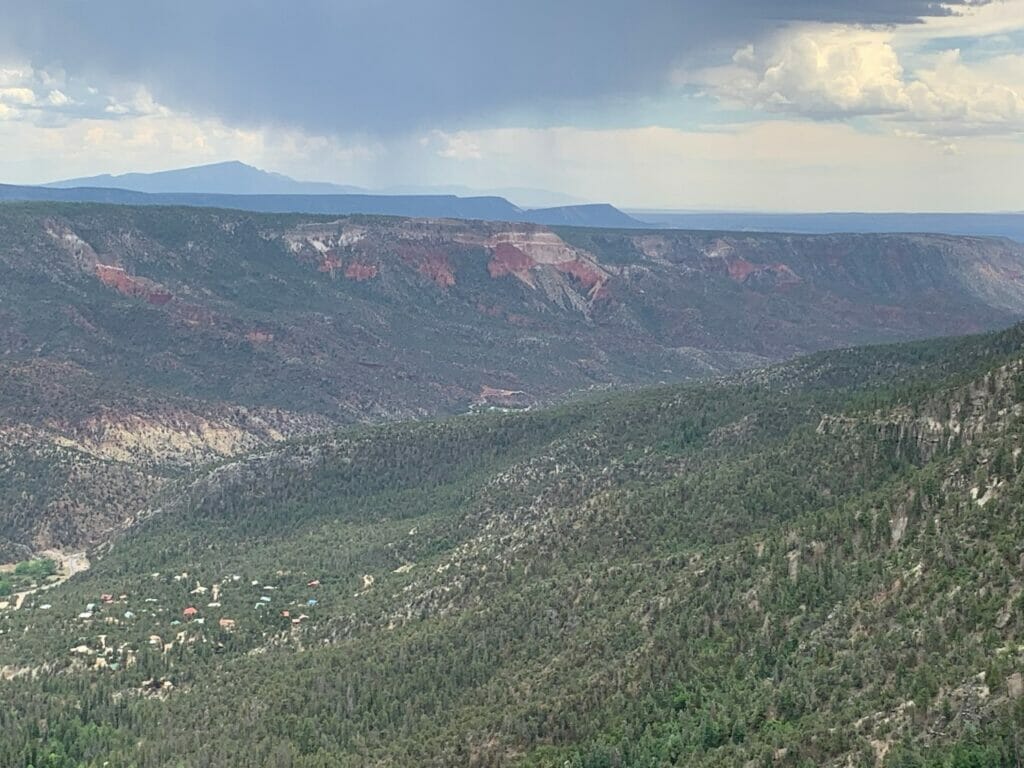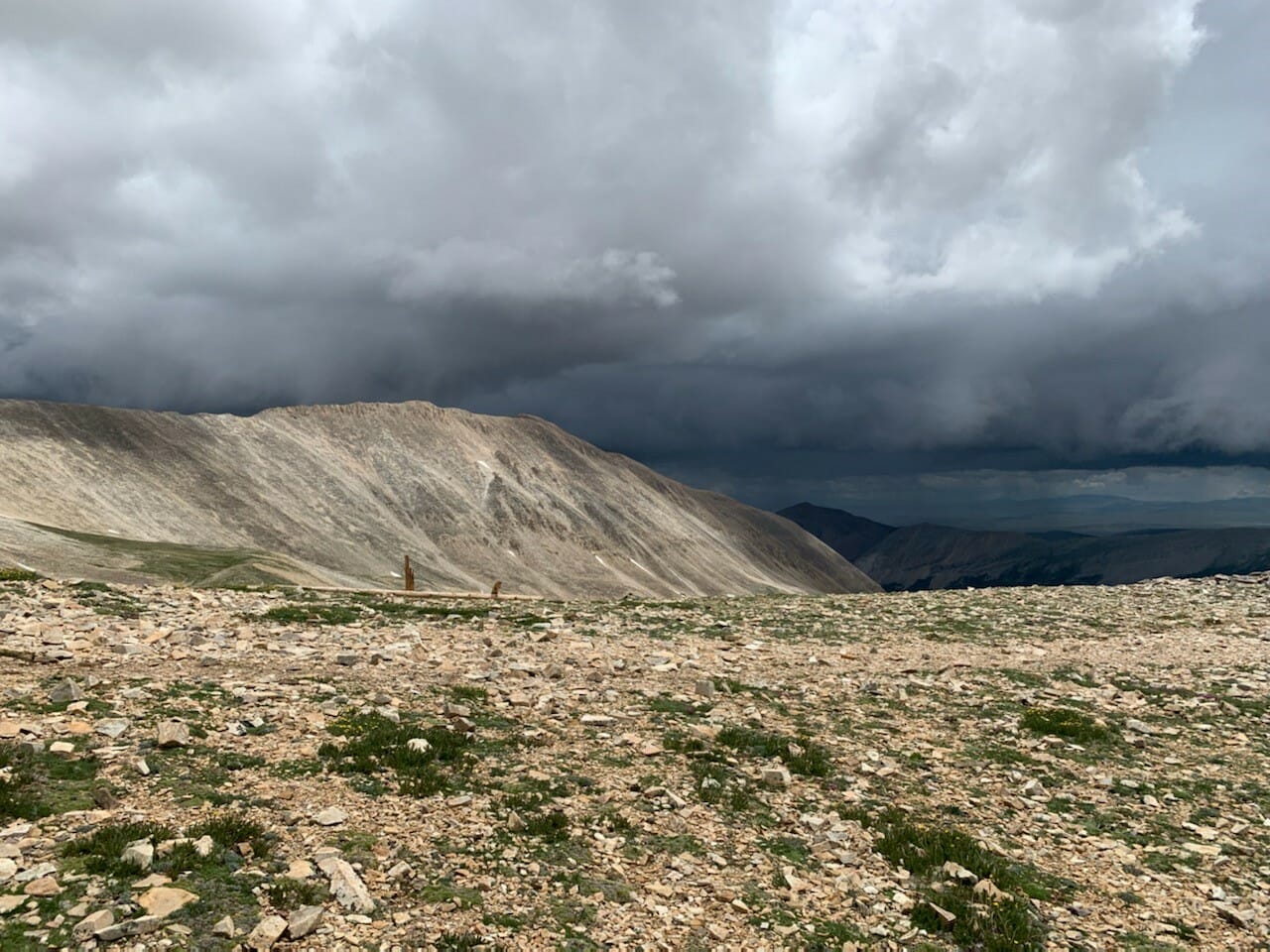My son was invited on a boating trip to celebrate a pal’s birthday. The original plan featured a lake about an hour away, but since that one had dried up, they drove three hours farther to a reservoir near the Texas border. It’s flat out there on the plains, but back here in Santa Fe, the view was the same. Flat, no mountains in sight thanks to all the smoke.
As ominous as that was, we were a lot more terrified earlier in the summer, when each day dawned with a similar white sky and the evening sun hung like a persimmon above the barely visible Jemez Mountains to the west. The heat had been horrible. We had some fire starts, but they never got anywhere because our precipitation, though not heavy, was well-timed and on target. Otherwise though, the certainty that the big one was just an abandoned campfire away hung in the June air like the burning forest blown over from California. Fishing was near the bottom of the list of things I wanted to do. I didn’t have the heart. Streams at 10,000 feet were marking 75 degrees by noon.
In a monsoon zone, one must cultivate a strong belief in magic. The scorching hot lead-up is tough to take, even if one is familiar with the phenomenon. We’re taught to welcome the heat, as it’s necessary to pull the cooler moist air north out of the Gulfs of California and Mexico. The magic is the sudden appearance of towering cloud masses, which will hopefully start wringing themselves out before July 4 and its devotees descend upon the land.
As yet, climate change’s influences on the North American monsoon aren’t fully understood. Generally speaking, warming oceans and air are disorganizing global air currents, affecting where moisture is picked up and put back down. One has to assume, and I think we all do, that the monsoon is in there somewhere.

Scientists predict higher temperatures for New Mexico, no significant change in precipitation amount (though it will fall more as rain than snow), and a longer growing season. So ultimately, there’ll be less water for use by humans and wildlife. There’s always a chance for a random Texas freeze or Portland pizza oven to fly in from left field.
This “global weirding” I’m reading more about requires bigger brains than mine to figure out. Thus, I’ve been tempted to move away from the big brains, to discredit them and ignore the constant climate horrors in the news. I figure if I can deny or avoid learning too much, I’ll have an easier time believing that the science has overlooked the critical something that will get us off of this handbasket ride, or at least make it smoother for my 15 year-old son, as his generation will face the consequences for what we have and haven’t done.
But I’m too late for delusion. I’ve followed this issue since the 90s, and the predictions have proven true.
Distraction will have to suffice. I’m trying to learn about the jet stream. Fisherman that I am, I’m fascinated by currents, the movement of stuff through and around, from one place to another and beyond. Mostly it’s water I picture in motion, but insects flow too and the trout with them. Seasons have currents. Spring flows up the mountain slopes. Leaf by yellow leaf, winter flows back down.
I’ve been tempted to move away from the big brains, to discredit them and ignore the constant climate horrors in the news. I figure if I can deny or avoid learning too much, I’ll have an easier time believing that the science has overlooked the critical something that will get us off of this handbasket ride, or at least make it smoother for my 15 year-old son, as his generation will face the consequences for what we have and haven’t done. But I’m too late for delusion. I’ve followed this issue since the 90s, and the predictions have proven true.
Currents like the jet stream track gradients in altitude, pressure, temperature and other parameters. Like a river, there’s a large over-riding gradient and countless smaller ones. One can see paths from overfilled spaces flowing to relative vacuums. It seems the steeper the path — I’m thinking of streams like the Red River in Questa and other creeks running out of the Sangre de Cristo mountains — the greater the excitement.
The jet stream’s path seems curvy in terms of where it hits and misses. Sometimes, like when I think it might be carrying a pile of saturated clouds, I wish there was some atmospheric log we could drop across it. And when a heat wave sets up, I wish we could roll something out of the way and let it carry its misery elsewhere. Imagining having the power to do such things is how I put myself to sleep at night.
Since the monsoons have in fact arrived, it’s been so nice to see the horizons obscured by falling rain and not smoke. We’re certainly not out of the woods yet, or ever, but the regular mountain storms have eased my desperation, if not my wife’s. She just got a new job, our son’s still in the nest, and she’s reluctant to believe that any storm has another coming after it.
Winter’s concerns — pine beetle suppression, next spring’s runoff, and whether we’ll have a ski season or not — are still a few months off, so I’m going to enjoy this while I can. Lately on work trips I’ve detoured into the mountains whenever the blue-black clouds begin to stack up. Sometimes I pull off on a forest road and sit with the window down as the rain pounds the car. It’s difficult to describe the smell of cool and wet air in a thirsty New Mexican forest. It’s easy to describe how it feels.



